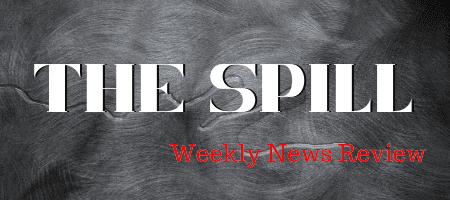The Spill: Fukushima Anniversary
Weekly news you can use.
By: GenZ Staff | March 15, 2021 | 550 Words

Fukushima Daiichi Nuclear Power Plan (Photo by Smith Collection/Gado/Getty Images)
Fukushima’s Ten-Year Mark
The Fukushima nuclear disaster of 2011 was the worst in 30 years. After a 9.1 magnitude undersea earthquake caused a tsunami, the Fukushima Daiichi Nuclear Power Plant in Ōkuma, Fukushima, Japan, experienced a failure of the emergency generators. This caused a meltdown in three reactors. It was the worst accident since Chernobyl in 1986.
Months later, the accident was ruled “foreseeable,” and the Tokyo Electric Power Company (TEPCO) was blamed. A Japanese court ruled in 2017 that the government was also “negligent” because it did not use regulatory power to force TEPCO to take preventive measures for disasters.
 The Associated Press reports: “Proper equipment has now replaced ragged plastic hoses held together with tape and an outdoor power switchboard infested by rats, which caused blackouts. Radiation levels have declined, allowing workers and visitors to wear regular clothes and surgical masks in most areas.”
The Associated Press reports: “Proper equipment has now replaced ragged plastic hoses held together with tape and an outdoor power switchboard infested by rats, which caused blackouts. Radiation levels have declined, allowing workers and visitors to wear regular clothes and surgical masks in most areas.”
Tokyo University professor Kiyoshi Kurokawa wrote in a recent report of the disaster: “It was a profoundly man-made disaster – that could and should have been foreseen and prevented. And its effects could have been mitigated by a more effective human response.”
The Latest COVID-19 Stimulus Passed!
Last week, Mr. Joe Biden officially signed the $1.9 trillion coronavirus relief package, checking off the first box on his hefty to-do list for the nation.
The plan will direct financial aid to millions of Americans. Each eligible person will get $1,400. Those in line for relief who have a direct deposit account will be the first to receive the payments. Also crammed into the bill is an extension of the $300 per week unemployment insurance and the expansion of the child tax credit for an additional year.
There will also be money set aside for restaurants, small businesses, K-12 schools, and the Supplemental Nutritional Assistance Program (SNA), which many people still call “food stamps.”
A Digital Unveiling of a Secret 17th Century Letter
A private letter between two cousins in 1697 has been read by researchers – without breaking the seal of the interlocked paper. French merchant Jacques Sennacques in Lille wrote to his cousin Pierre Le Pers at the Hague on July 31, 1697 to ask for a “legalised excerpt of the death of sieur Daniel Le Pers.”
Using X-ray microtomography scans of the letter, an international team of researchers diligently examined the paper. Slice by slice, they created a 3D image to open. By then applying computational flattening algorithms to the image, they unfolded the letter. The letter had been closed, as many in those days were, by using “interlocking.” Interlocking is a folding process that creates its own envelope.
The Unlocking History research group, consisting of historians, conservators, and scientists, say this is a breakthrough for studying many historical documents without destroying additional clues.
A collection of 2,600 letters from 1689 through 1706 was donated to the postal museum in 1926 by the chief postmasters of the Hague, Simon de Brienne and Marie Germain. The collection describes the valuable history these letters provide as they “bear witness to the fragility of lines of communication at a time when Europe was torn by war, economic crisis, and religious differences” and where people “moved frequently, sometimes in haste, leaving no forwarding address because they did not have one, or they were not at liberty to divulge it.”
What a great tool for uncovering more details of life in the 17th Century.

















